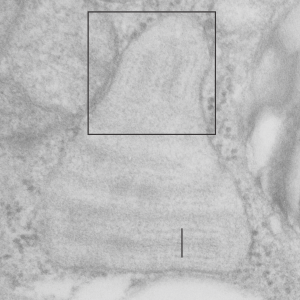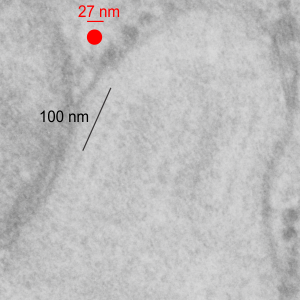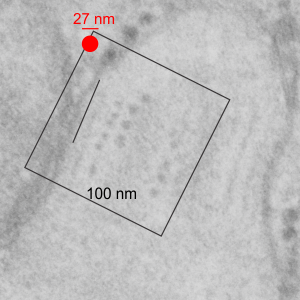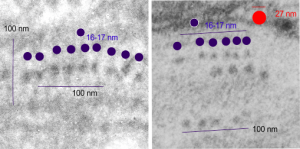Guinea pig alveolar type II cell granule protein: surfactant protein A?
There are so many images which show the same data, layering, periodicities, hexagonal array at the growing ends of granules that the evidence that these are some regular sort of structure in select species is a little hard to ignore. I keep trying to convince myself that I am seeing what I think I am seeing. This opportune section of an alveolar type II cell (from ferret) granule is just kind of nice, as it shows the growing end ribosomes, the stiffness of the RER profile when the protein begins to organize (seen on the left hand side of the micrograph) the looseness at the growing end before further oligomerization takes place in the granule (right hand side of the micrograph) where it seems that there is some kind of organization soon after the protein leaves the ribosomes (like the hexagonal pattern for a top down view of surfactant protein A, as seen here (unretouched EXCEPT for the burn tool in photoshop to highlight what I have seen), though I would have liked to see more with the central dot. Ribosomes were burned to highlight, and a ribosome marker (nominal 27 nm) are given plus a bar marker at approximately 100 nm, and hexagons at the growing end of the granule are burned as well. Inset is enlarged from white box in top figure. 9835_17084_guinea_pig_#301





